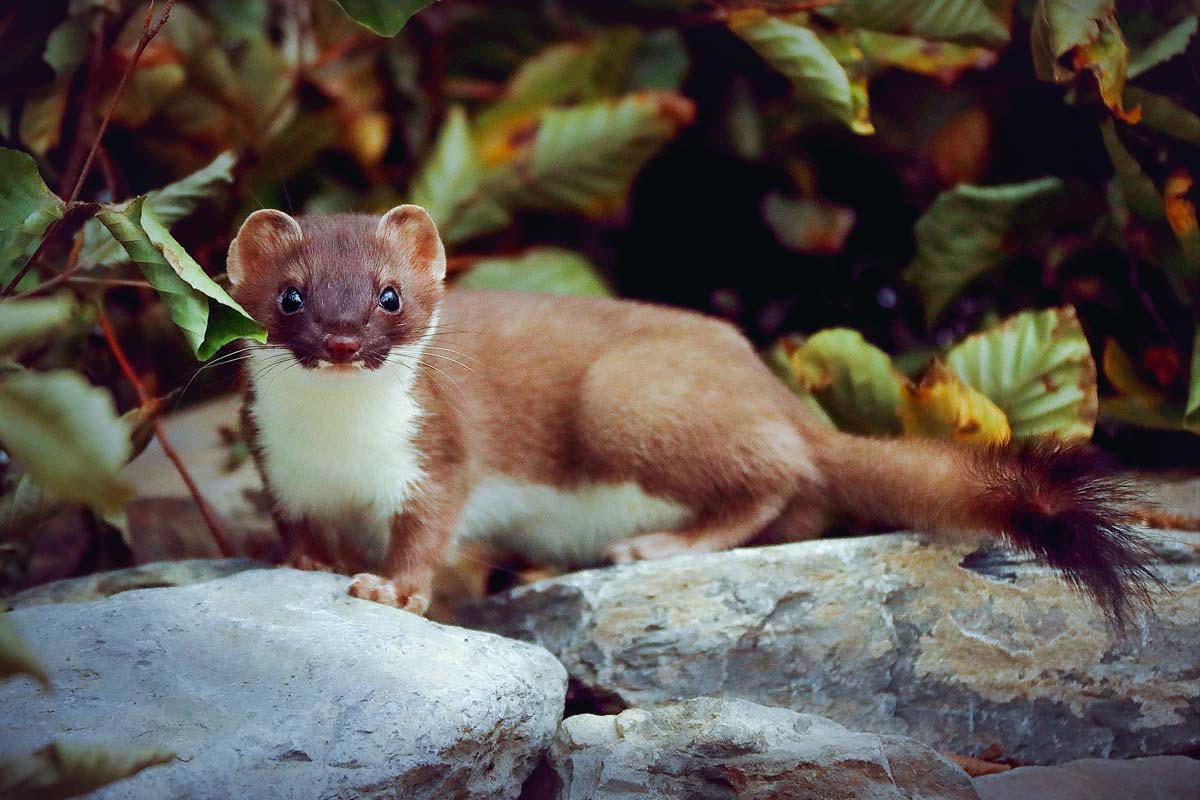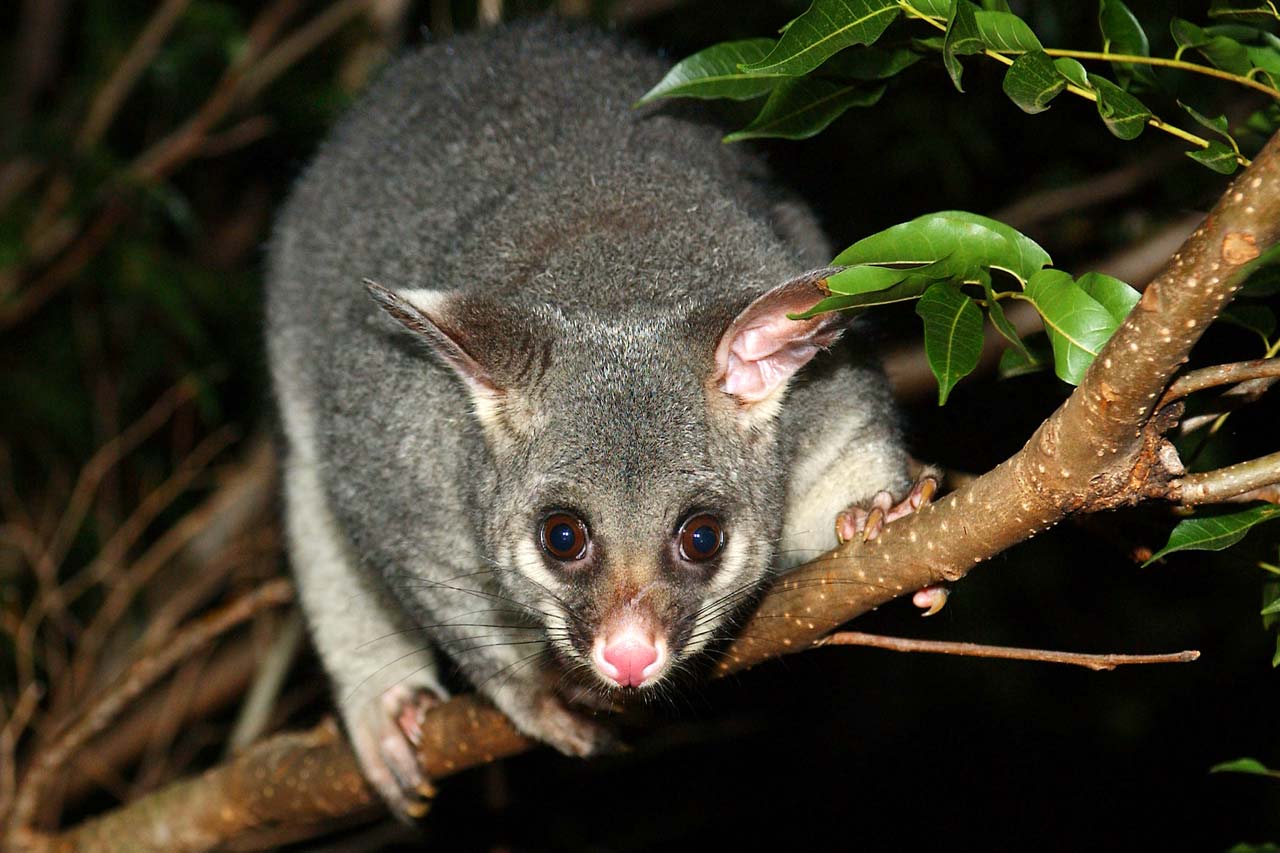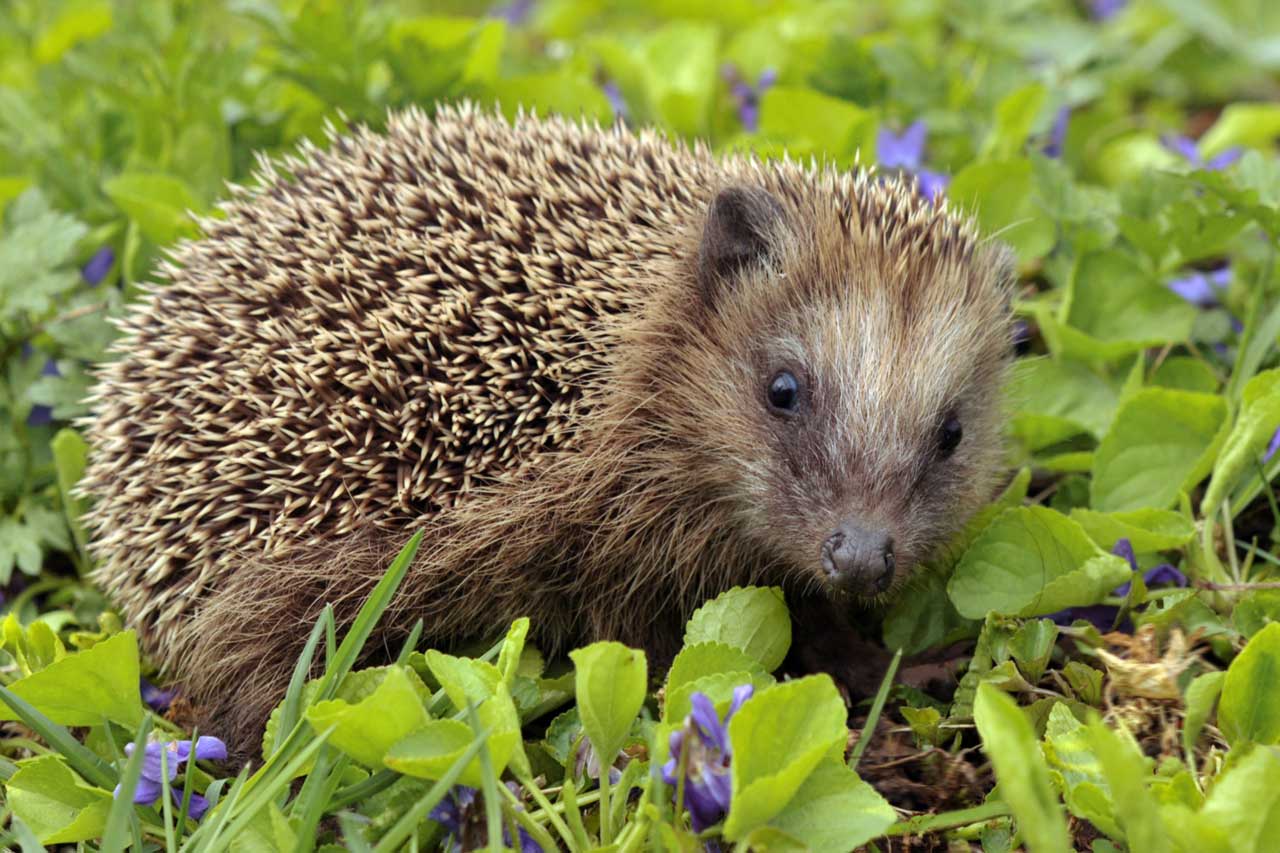Predators we’re targeting
Introduced mammalian predators like stoats, rats, possums and feral cats are the single greatest threat to Aotearoa New Zealand’s native wildlife.
Many native species, especialy ground-nesting birds like whio and takahē, are defenceless against these invaders, with eggs and chicks often destroyed before they reach adulthood.
These predators don’t just kill — they compete for food, destroy habitats and disrupt entire ecosystems. Without urgent action, we risk losing some of our most iconic taonga forever.

Mustelids
Mustelids — stoats, ferrets and weasels — are among the most destructive predators in Aotearoa New Zealand’s ecosystems. Introduced in the late 1800s to control rabbits, they quickly turned their attention to far more vulnerable prey: our native wildlife.
Mustelids are fast, intelligent and relentless hunters – earning their reputation as “public enemy number one” from DOC. Stoats, in particular, are infamous for their agility and ability to kill prey much larger than themselves.
They are known to climb trees to raid nests and can cover vast distances in search of food. Native birds like kākāriki, mohua, whio, and takahē can fall victim to them—often before they reach breeding age. If they get the chance, they’ll kill more than they need for food and hide the rest in their den to eat later.
Mustelids can thrive almost anywhere in New Zealand, traveling far and fast. Stoats have been known to cover 70km in two weeks and swim over a kilometre to reach islands. They also breed rapidly: a single litter can have up to 12 young, and female stoats can become pregnant as babies, carrying delayed pregnancies until adulthood.
Rats
New Zealand is home to three rat species: the ship rat (Rattus rattus) also called the common or black rat, which is the most widespread; the Norway rat (Rattus norvegicus) or brown rat, the largest; and the kiore (Rattus exulans), the smallest.
All three eat native insects like wētā, as well as snails, frogs, lizards, tuatara, birds, bats, and the flowers, fruits, and seeds of many plants.
Ship rats pose the greatest threat. Agile climbers, they easily reach tree nests and have been linked to the extinction of several native birds, including the bush wren, huia, laughing owl, New Zealand little bittern, and South Island snipe.
Norway rats have thick tails shorter than their bodies and small ears. Strong swimmers, they can cover distances of up to a kilometre in water. They mostly live on the ground and prey on eggs and chicks of ground-nesting birds like the New Zealand dotterel and shore plover, though they can climb when needed.
Kiore arrived with early Māori voyagers, while Norway and ship rats came later with whalers, explorers, and settlers. Outcompeted by these newer arrivals, kiore now survive only on a few offshore islands and in parts of remote Fiordland.


Possums
Possums are a major threat to New Zealand’s environment and are found across the country. Their only real predator, the feral cat, has little impact on controlling their numbers.
The common brushtail possum (Trichosurus vulpecula) was first brought from Australia in 1837 to start a fur trade. That attempt failed, but a second release 20 years later in Southland succeeded.
Possums are opportunistic omnivores. They eat buds, flowers, fruit, berries, and nectar—competing with native birds and reptiles for food. When they feed on all parts of a plant, they can disrupt its growth and life cycle. They also target favourites like rātā and kāmahi, putting extra pressure on these species.
In 1993, possums were filmed eating kōkako eggs and chicks, changing public perception of their threat to wildlife. They also eat wētā and other invertebrates, and prey on native land snails like Powelliphanta. Possums often nest in tree holes that would otherwise shelter birds like kākāriki and saddlebacks.
For farmers, possums are a serious concern. They spread bovine tuberculosis and cause economic losses in the tens of millions through damage and control costs.
Feral Cats
Feral cats have a major impact on our native birds, bats, lizards, wētā and other insects.
They’re different to stray cats: neither are owned, but strays have varying interactions and dependence on humans while feral cats are wild.
Feral cats have the same appearance as some common, short-haired house cats such as tabby, tortoiseshell and black. They can grow to a much larger size than house cats if conditions are favourable – in the Rees Valley a male feral cat was caught, weighing in at a whopping 8kg.
Not only destructive, feral cats can travel long distances. Scientists tracked a feral cat in the South Island high country that covered almost 6km in one night.


Mice
Mice are a key food source for stoats and feral cats in New Zealand forests. When food is abundant, their numbers can increase rapidly, but that doesn’t neccessarily equate to less risk for our native species.
As omnivores, mice eat both plant and animal matter. They adapt easily to available food, with invertebrates making up most of their diet. However, they also eat bird eggs, chicks, lizards, and have been recorded feeding on inanga eggs in estuaries — impacting whitebait runs.
Their wide-ranging diet leads to broad ecological impacts. By consuming insect larvae that break down leaf litter, mice disrupt nutrient cycling and prevent nutrients from returning to the soil. They also target specific seeds, limiting regeneration and altering forest composition.
In mast years – when plants like beech trees and tussocks seed heavily – mouse populations boom. This fuels a rise in predator numbers. As predators switch from mice to native species, bird predation spikes and can lead to local collapses in native populations.
Hedgehogs
Hedgehogs were first introduced to New Zealand by acclimatisation societies to remind settlers of home. Later, more were released to control garden pests like slugs, snails, and grass grubs. Today, they are widespread and pose a serious threat to many native species.
Their preferred habitat is lowland pasture, but recent research shows they are also common in large forest areas. Once thought to avoid higher elevations, hedgehogs have now been found up to 1800 metres above the bush line.
They are major predators of riverbed-nesting birds like banded dotterels and black-fronted terns, eating both eggs and chicks. Hedgehogs have a huge appetite for invertebrates and consume many local endemic species. They eat rare insects like giant native centipedes and wētā, as well as native snails such as Wainuia urnula. Lowland populations of Powelliphanta snails may also be heavily impacted. They also prey on lizards and skinks.
Hedgehogs are frequently caught in ground-set traps across Central Otago, braided rivers in South Canterbury and North Island forests.
Avoid encouraging them into your yard—don’t leave out milk or create burrows. Instead, set a trap suited to your setting (urban or rural). Hedgehog prints show five toes and look like large rat tracks. Their forefeet are wider and shorter than the hind feet, leaving two distinct types of prints from one animal.
